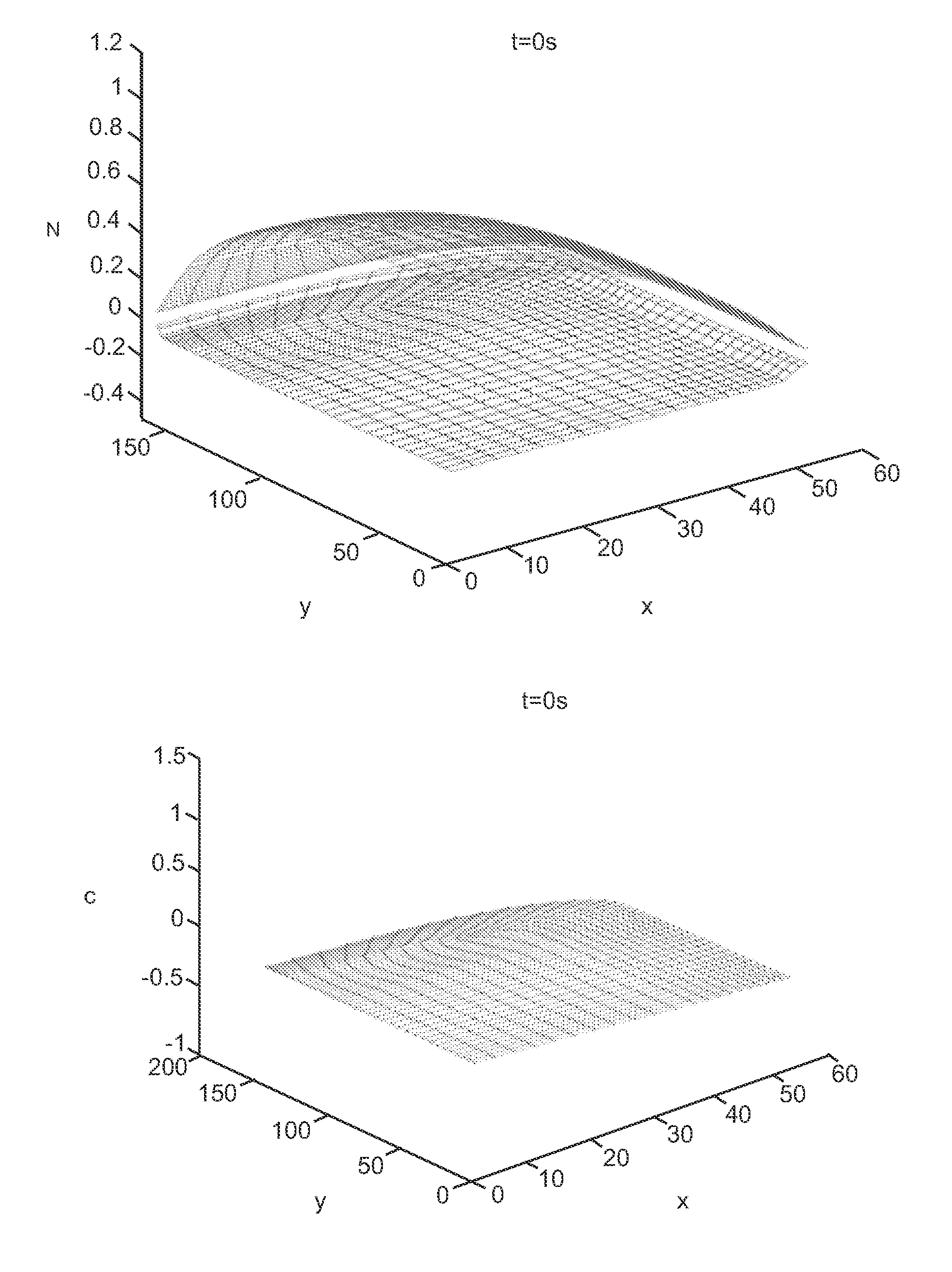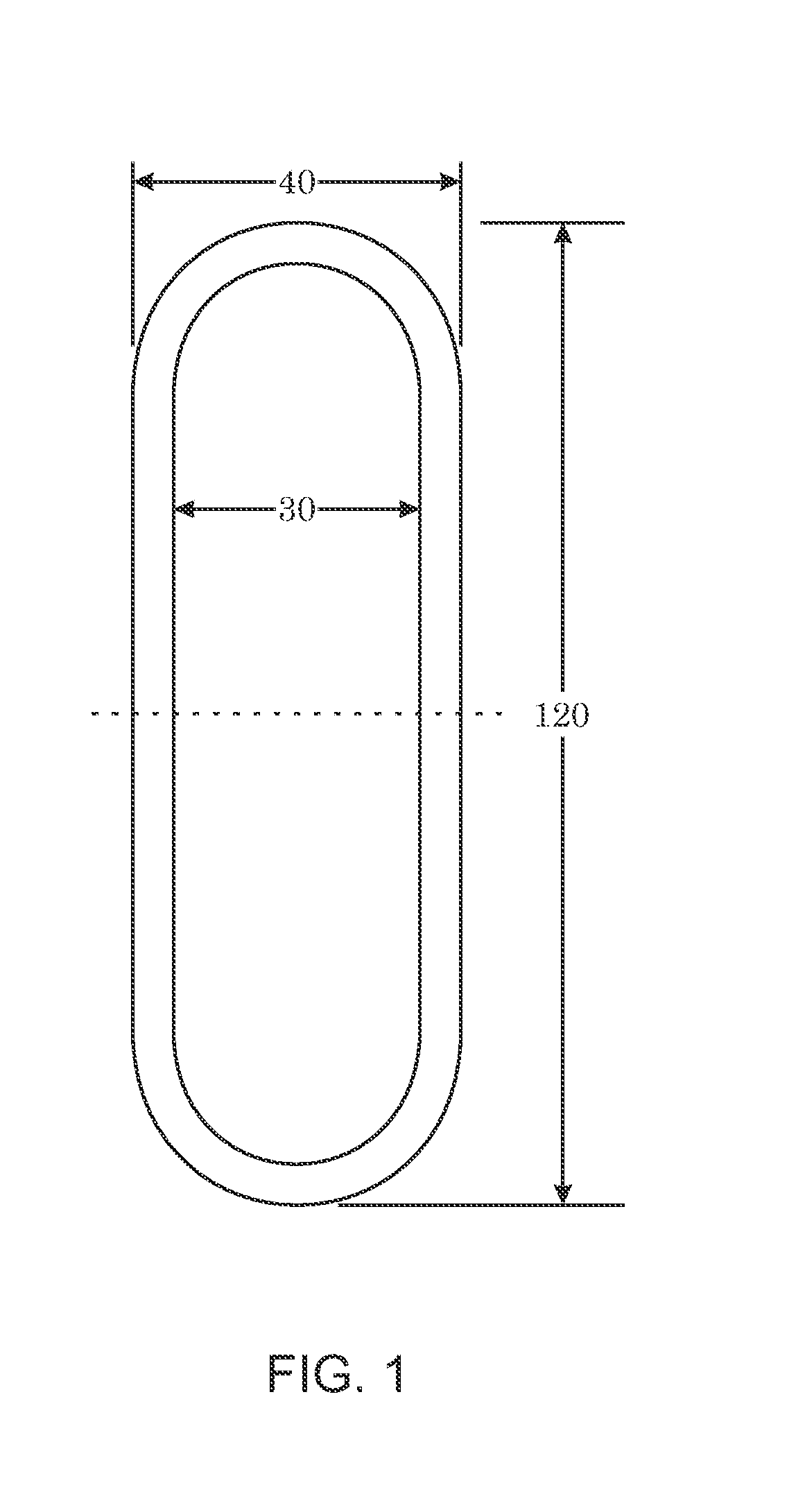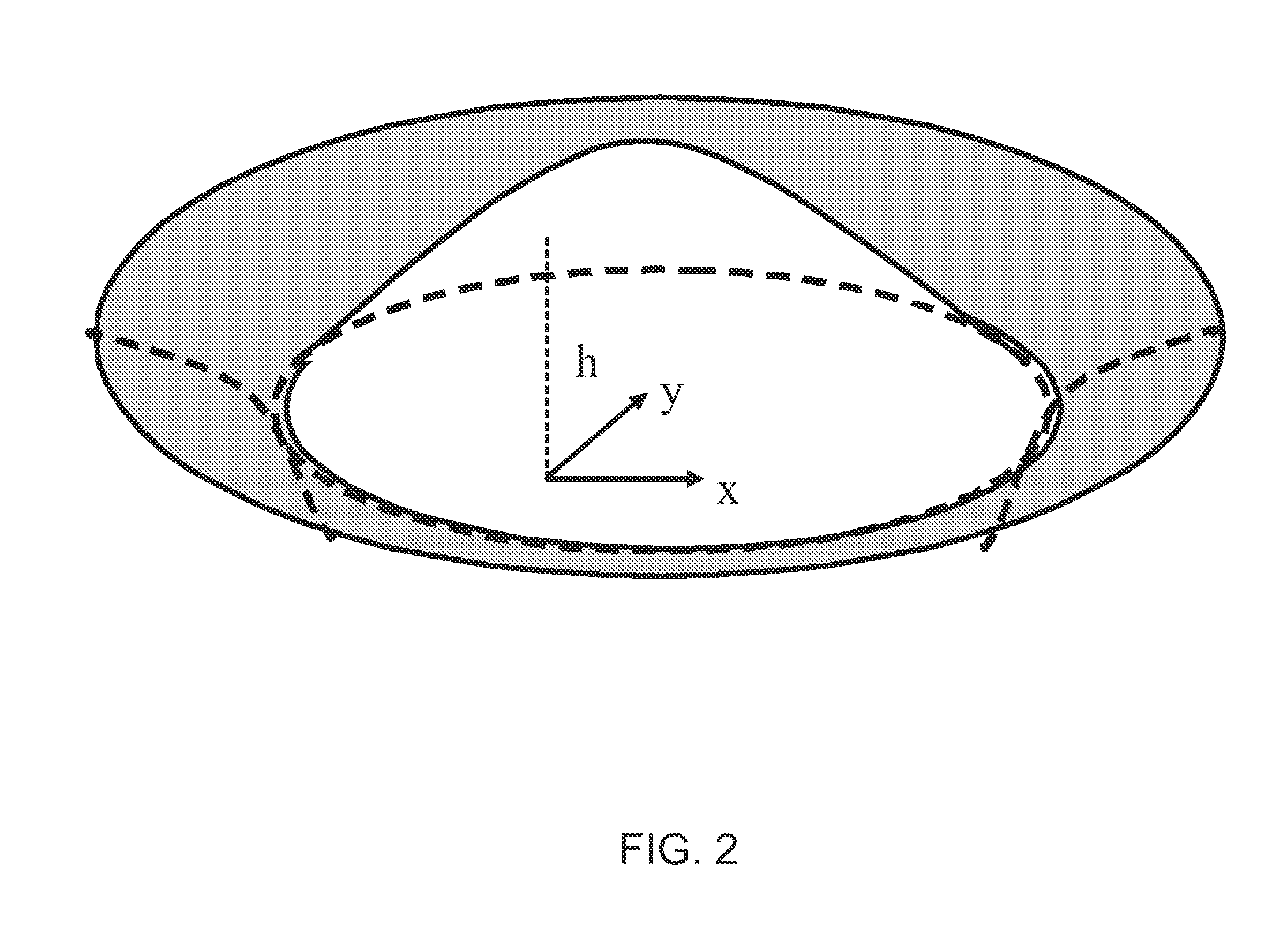Solving a Solute Lubrication Equation for 3D Droplet Evaporation on a Complicated OLED Bank Structure
a lubrication equation and droplet technology, applied in the field of systems and methods for simulating the evaporation of droplets, can solve problems such as invalid assumption
- Summary
- Abstract
- Description
- Claims
- Application Information
AI Technical Summary
Benefits of technology
Problems solved by technology
Method used
Image
Examples
Embodiment Construction
[0029]This present invention is a method based in part on the Finite Element Method (FEM) of simulating a droplet on non-flat substrate. An embodiment of the present invention may be used to simulate a droplet whose dimensions may not be reduced using symmetry.
[0030]In the industrial printing process, small ink droplets containing one or more solvents and solutes of desired metal, polymer, or other material(s) are ejected onto the target area of a patterned substrate. After the droplets land onto the targeted area, the solvent evaporates and a thin film of the solute is formed. Being able to control the final pattern of the solute film is important to the application of such industrial printing process. In order to control the final pattern of the solute film, it is crucial to understand how the final pattern is influenced by control factors like evaporation rate, initial droplet volume and shape, initial solute concentration, and contact line dynamics.
[0031]Numerical simulations ar...
PUM
 Login to View More
Login to View More Abstract
Description
Claims
Application Information
 Login to View More
Login to View More - R&D
- Intellectual Property
- Life Sciences
- Materials
- Tech Scout
- Unparalleled Data Quality
- Higher Quality Content
- 60% Fewer Hallucinations
Browse by: Latest US Patents, China's latest patents, Technical Efficacy Thesaurus, Application Domain, Technology Topic, Popular Technical Reports.
© 2025 PatSnap. All rights reserved.Legal|Privacy policy|Modern Slavery Act Transparency Statement|Sitemap|About US| Contact US: help@patsnap.com



